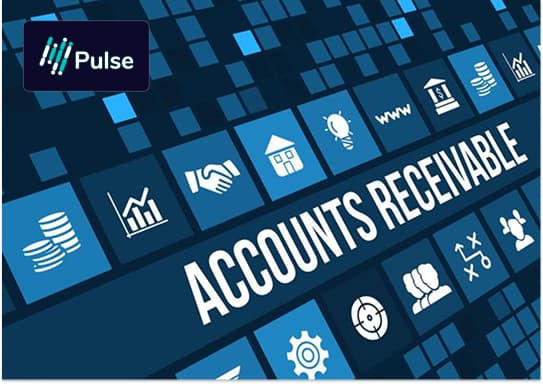The banking-fintech ecosystem in the UK is evolving at an alarming pace when it comes to embedded lending. For those familiar with the environment: bank strategists, lenders, and SaaS infrastructure providers, the shift focuses more on how embedded explores what embedded lending truly means for the UK, and how bank-SaaS lending can be executed in a profitable and sustainable manner. This blog delves into what embedded lending truly means for the UK, how bank- SaaS partnerships are evolving, and which strategic imperatives and challenges lie ahead.
Embedded Lending
Embedded lending refers to credit products delivered within the customer journey of non-lending platforms, such as merchant checkouts, accounting software, marketplaces, or dashboards. This is far more effective than offering credit as a standalone product via loan applications at a bank branch or generic portal.
The embedded lending market is projected to grow from USD 9.2 billion in 2025 to USD 35.8 billion by 2035, with a compound annual growth rate (CAGR) of 14.6%. This growth is driven by increasing demand for seamless credit access, fintech partnerships, and API-driven architectures that enable real-time underwriting and compliance.
From a bank’s perspective, embedded lending represents a gateway into new distribution channels without the upfront cost of infrastructure or customer acquisition costs. For SaaS providers, it provides an opportunity to create monetisable solutions and a way to deepen stickiness. Embedded finance will eliminate friction for customers and create endless opportunities for innovation.
What bank-fintech/SaaS partnership models look like
There are several emerging models for how banks and SaaS providers can collaborate in the UK embedded-lending space.
Bank and SaaS solution integration
The SaaS company provides loan origination, loan management, and automated underwriting solutions, while the bank integrates via API integration. For example, a bank can collaborate with Pulse and leverage their Unified Lending Interface (ULI) to scale embedded lending, increase revenue, speed and accuracy without investing in infrastructure or additional staff. Pulse ULI’s Loan Origination System (LOS), Loan Management System (LMS), and Einstein aiDeal can help automate, expedite, and streamline the entire lending cycle. Pulse LOS helps reduce the application time to under 3 minutes, while Einstein aiDeal can auto-decision 95% deals in under 45 seconds with customisable criteria. Pulse’s LMS helps track repayments, defaults, and delays post-disbursement. To learn more about Pulse ULI, contact us today.
Platform ecosystem embedded lending
A large ecosystem (e-commerce, marketplace, loan aggregator) partners with a SaaS company like Pulse for its tech stack— i.e., the technology and solutions that help make embedded lending seamless (e.g., Pulse ULI). The marketplace or aggregator then partners with a bank to embed loan products/offers at the point of sale, in-platform. The bank’s role is to provide loan products and offers, the SaaS company provides the tech, and the platform handles customer-facing and UI. The customer or end-borrower perceives the loan journey as seamless inside the aggregator’s platform.
In the UK, the first model is growing in popularity among banks, while the second is gaining popularity among aggregators and brokers.
What The Future Looks Like
Looking ahead, embedded lending in the UK will evolve in three broad waves:
Wave 1 – Credit-as-platform feature: Businesses or consumers see credit inside the system or marketplace tool they already use. The bank is wholly behind the scenes. Conversion is improved, and underwriting leverages platform data. The business model is typically origination or revenue-share with the platform.
Wave 2 – Ecosystem-native credit flows: Credit becomes a native part of an ecosystem rather than an add-on. For example, a procurement platform for SMEs offers seamless invoice financing via embedded lending, or a vertical SaaS (e.g., construction) offers embedded working capital. The bank-partner becomes an “enabler”.
Wave 3 – Platform-bank hybridity: Ultimately, the line between banking and platforms will blur: banks will become “platform-orchestrators” and platforms become “bank-goods” purveyors. Some SaaS companies will move toward providing solutions that empower embedded lending like Pulse’s ULI, and some banks will offer “lending as a service” by leveraging this tech-stack. For UK banking partnerships, this means that banks that don’t evolve will struggle to compete.
In the UK, given the high regulatory bar, the presence of open banking infrastructure, and the pressing demand from SMEs and digital-native consumers, the timing is right. The market’s still at a fledgling level, but the leading actors are now shifting from proofs of concept to scalable models.
Conclusion
For UK-based banks, lenders, SaaS companies, and ecosystem platforms, embedded lending will become the new normal. The competitive dynamic is transitioning from “build it ourselves” to “partner it together”. Success will depend not just on technology but on alignment of underwriting, operations, regulation, and partner economics.
If you are in the UK banking-fintech space and you’re reading this: the key question is not whether to embed lending, but with whom, how, and at what pace. How will you structure the partnership so that value flows to all parties? The winners in 2026-30 will be those who either build an embedded credit architecture or leverage existing solutions via SaaS companies like Pulse to provide embedded lending that is frictionless, compliant, economically aligned, and integrated into real-world workflows.
Related Blogs


